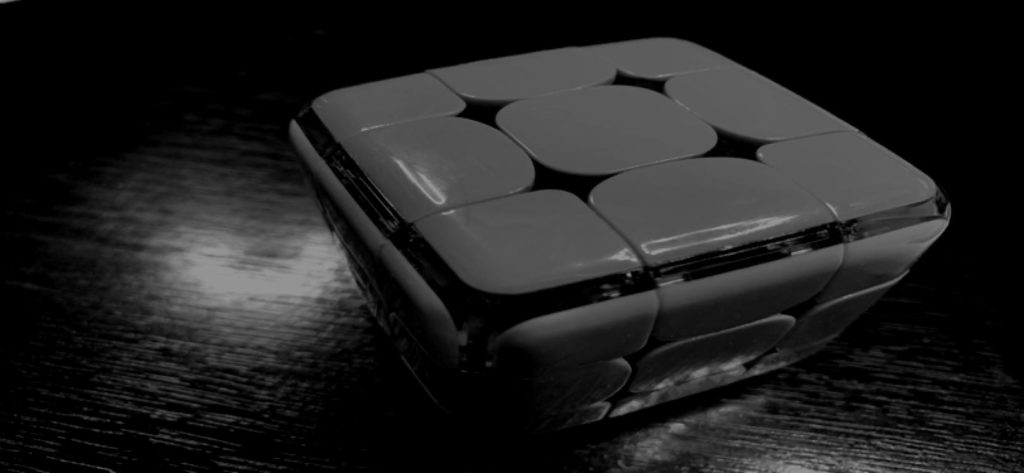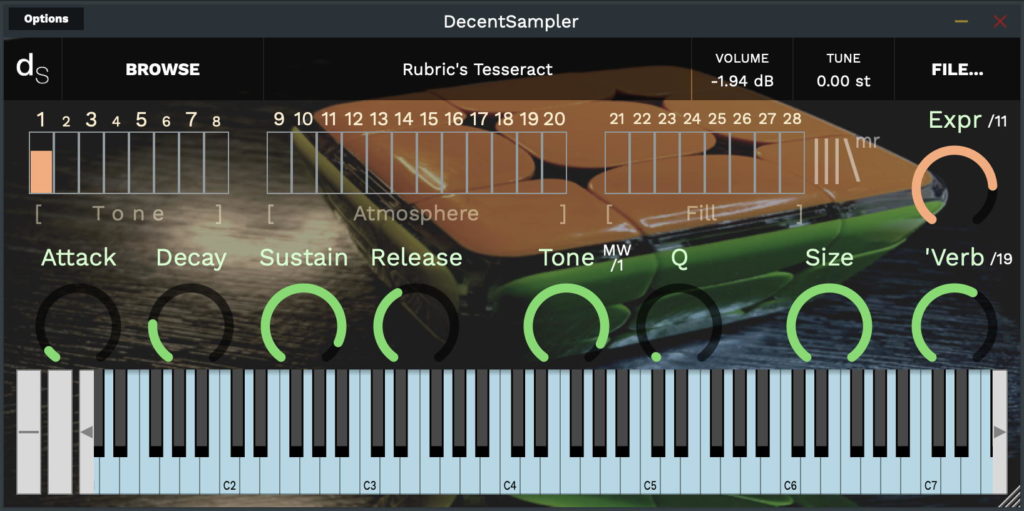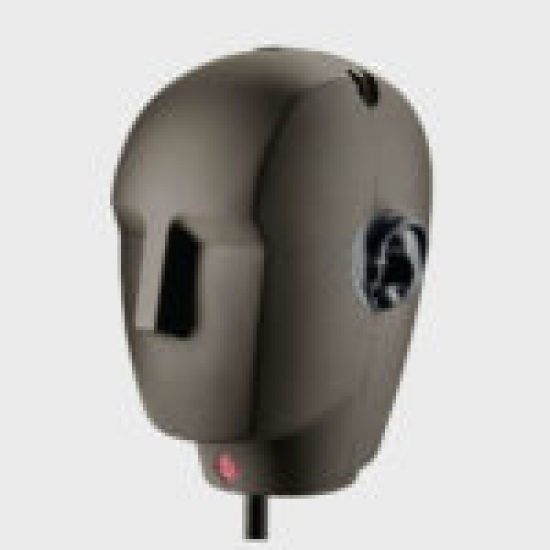
The story
Velocity scaling, round-robins, inverted velocity scaling, layer detune scaling, spectral smearing, high-pass filtering and lots more technology is used here to turn the sound of a rotating layer of cubes from a 3×3 puzzle cube into a virtual instrument, (or a Sample Pack in Pianobook.co.uk-speak).
“Hang on,” you might very reasonably say. And you do look like a reasonable person to me, even though I cannot possibly see you from this distance.
“I have never, EVER wanted the sound of something like that turned into music.” You state, coldly, and in what feels like a definitive way to you. Your hands involuntarily spread wide in the universal gesture of disbelief.
My answer, of course, is that whilst you may not have known you wanted the sound, it is perfectly possible to make you covet it, to ensure that, from now onwards, your every waking moment will be consumed with an insatiable lust to own it, to make its acquisition part of an all-consuming GAS episode. An unreasonable desire, heightened by every word you read from this malignant text stolen from a creative writing class. The opening words of this story just whet your appetite, whilst every piece of this page that is devoted to this sample pack serves only to heighten your sense of an unrequited need. The longer the text in the story, the more important the topic must be, you see. The larger the setting, the more significant the payout at the end – the media play this game all the time… You WANT this!
Rubric? Tesseract?
A pretentious name also helps. Turning a noun into a personal pronoun starts the disorientation process, and then using a latin-derived word for a four dimensional cube provides the perfect bracketing end-point. Game, set and match. You probably already want to download it – regardless of what the reviews might say. In fact, cognitive dissonance informs us that the more you read that this is not worth the download time, the more you have to have it in your possession.
Which is why politicians, movie directors and marketing executives all get highly paid writers to string words together and, in the process, see them turned from mere bunches of characters, into brightly polished gold. Nay, burnished gold!
The sampling
I use an unusual and very old technique for sampling this type of object. In terms of microphones, I did not use that ‘object of insane desire’, the Brauner VM1S or the ‘forgotten at the bottom of the spares box’, the Telefunken ELA M251T. My preference is to use a Mundane Number 1, which is usually the first electromechanical audio wavefront converter my hands happen upon first.
Synthesis technique
Rubric’s Tesseract uses superposition synthesis, derived from quantum theory – which is over-hyping what it really does: mix several samples together. I’m pretty sure that some marketing person is going to put ‘Superposition Synthesis’ onto the front panel of a synthesizer at some stage in the next few months or years. ‘As used by Physicists…’ Might be one route into creating an ear-worm you won’t be able to forget…
The User interface
(I’m infamous for these…) The user interface has just two sections, and unlike most of my other virtual instruments, these are not rows or columns. One is a partial row, whilst the other is an L-shape. Two dimensional abstractions projected from a D shape, perhaps?
The incomplete top row…
The top row has three blocks of ‘Mic’ sliders, which would conventionally be used to select microphones based on their polar characteristics and their position in three-dimensional space. In this case, they just allow the mixing of 28 separate sound sources into a homogenous result – that you hear. The three blocks have descriptive names to give your mind ‘handles’ on which to hang both positional and acoustic characteristics.
The first block
The first block is labelled ‘Tone’. It contains sounds which are strongly pitched, arranged in pairs. The larger number indicates the lower pitch, the smaller number indicates a higher pitch. I did consider reversing this convention for one pair, just to mess with your minds, but decided to do something else, more subtle, instead.
The second block
The second block has the label ‘Atmosphere’, which automatically sets your expectations about what they will sound like. Again, they are organised in pairs, but without any visual clues this time. Number 20 is one of those ‘rhythmic’ sounds that you love and use, or detest and never darken your work with. 13, 14 and 19 are probably going to upset your mastering engineer if you don’t pull the Tone control down quite a lot…
The third block
The third block is just ‘Fill’, and the label tells you this, plainly, without any attempt at subterfuge (the lower form of terfuge, whatever that is!). You are probably expecting these to be organised in pairs, and you would be entirely correct in that assumption. Do you feel satisfaction for your insightful moment of clarity? The right-hand end of the top row is the outlier here. It actually contains a rotary control instead of a ‘Mic’ slider, and it is used to control the volume of the sound, disguised as ‘Expression’, because obfuscation is always a good ploy for increasing the perceived value of an item. But this is a four dimensional object with a price that is intangible, and only adds value to Pianobook.co.uk, rather than itself intrinsically.
The lower row
The rotary outlier theme continues down and across to the lower row, with four ‘envelope’ controls that affect the start, middle and end of the sound. Having three controls over time and one control over level has always seemed a strange way to control the time-line of a sound. Attack, Decay and Release all invoke physical interpretations that somehow are meant to convey the passage of time, whilst Sustain is just a level, from silence to loudest, and it kind of stretches the metaphor. Maybe a broken metaphor IS the point?
Next is a ‘Tone’ control that is really the cut-off frequency of a low-pass filter. A focus group charged with choosing the correct filter type might have chosen a band-pass filter, or a morphing high-pass to low-pass sophisticated filter, but here we get the standard provided low-pass filter so that the higher frequencies can be attenuated. The ‘Q’ control turns that low-pass filter into one with a peaky resonance at the cut-off frequency, which gives a sound not unlike the one that humans make when they open and close their mouth.
The final, right-most rotary controls are for reverberation, controlling the Size of the implied ‘space’, plus the Wet/Dry mix.
Sound-wise, you can choose just about any combination of the ‘mic’ sliders in the three blocks and you will get a sound of some sort. One thing to bear in mind is that, in general, the higher the slider number the lower the volume of that part of the sound should be – otherwise you will get a noisy ‘sound effect’. Setting lots of the sliders to the max is also going to give a bright, brittle sound. Also, the ‘mic’ sliders do not need to be set to maximum – half-way is fine for most purposes, especially when you are adding together lots of harmonics… You don’t need to have a ‘Mic’ slider set above zero in each of the three blocks, but this is often a good starting point.
Also, as in many things corporeal, less is more – don’t use too many sliders! Ultimately, let your ears be your guide two ears: two sliders, maybe 3, maybe 4, but more than that is too many…
Presets
Some of the reviews of my other Sample Packs said that there were too many controls, so I have included a few presets as ‘load and listen’ starting points, and to show the versatility of Rubric’s Tesseract as a sound source. I’m sure a Pianobook demo will be done using just this virtual instrument!
The sounds
There’s no getting away from this. The overall tone of Rubric’s Tesseract is gloomy and scary, and that’s on a good day. If you were perturbed by some of my previous virtual instruments Sample Packs, then this is more of that, but turned up to 11, maybe 12 or 13. This is not the stuff of happy, pop tunes. I very dare you!
MIDI Controllers
1 ‘Modulation Wheel’ controls the Low-pass Filter Cut-off Frequency, the ‘Tone’
11 ‘Expression’ controls the output volume
19 ‘General Purpose 4’ controls the Reverb Wet/Dry mix
V4
User Interface Video
Interface

Reviews for Rubric’s Tesseract
- Sound
- Character
- Playability
- Inspiration
- GUI
Leave a review to let others know what you thought of the instrument!
Craziest Pianobook Library
For me this is the best and the craziest decent sampler library. There is sooo much to do with this. So much to explore. So versatile. Having a great time messing around with this. Great job
One of the most complicated and awesome instruments in here
This piece has so much to it, feels like a proper professional instrument. Very underrated and seemingly unnoticed gem. So many tweak possibilities and things to do. Comes without saying that the download is a bit large.
Highly customizable ambiences!
This is a fairly big instrument but it is also capable of producing some very deep ambiences. It is highly customizable, with nice long evolving sounds and many presets to help you get started. In my opinion it shines if you find a good combination of settings and automate them with CC controls!
You might notice that the base tone is a little off-paned to the left, but the rest of the ambience fields the spectrum well.



